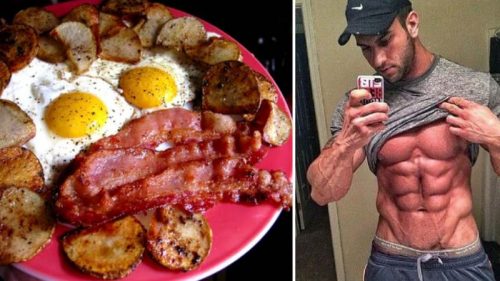Back in the 80s and 90s buying any food that didn’t have the “low-fat” label on it verged on taboo. Back in those days, egg yolks and butter were on the “worst offenders list”, while processed carbs and packaged goods were not even taken into consideration. But a lot has changed since then. Nowadays, nutrition experts recommend fat as the essential nutrient and full-fat foods, such as avocado, coconut oil, and ghee butter are listed among the greatest “super-foods”.
However, some people still wonder what type of fats they need to eat and how exactly it affects their bodies. In this article, we clear through all the conflicting information and myths surrounding this topic and give you the exact hard facts, which will ultimately help you build a healthier diet.
Myth #1: Fat on the plate equals fat on the body
The reality is that even though this notion represents the basis for various low-fat diets and foods, it is completely false. Consuming fat will not make you fat. Eliminating or reducing the amount of fat in your diet has the potential to make you gain more weight because it very often leaves you feeling deprived of essential nutrients. On the other hand, several studies have shown that foods with high-fat content can help with weight loss.
The main problem with the majority of diets is that they lack the essential ingredient which makes food taste delicious and inhibits your hunger. And that ingredient is fat. Healthy fats are actually the best energy source for your body, not to mention that they keep the metabolism and other fat-burning processes running as they should.
Lots of research has been done that supports this claim, showing that being on a low-fat diet could actually slow down the metabolic rate. That means that now you can enjoy a spoonful of peanut butter with some fruit on the side before your workout or a nice piece of steak for dinner every now and then, without the feeling of guilt.
Myth #2: Saturated fat should be avoided at all costs
Well, not so fast. Even though saturated fat has gotten a lot of bad rap over the recent decades, current research actually says it’s not that scary. That’s not to say that you should always pick a meal full of any type of red meat or butter, but eating them every once in a while won’t do significant damage to your health or waistline.
Even though butter has a higher content of saturated fat, it is a more wholesome product, especially the grass-fed variety. As we previously said, worse than eating foods with high-fat content is substituting them with sugar-filled foods. Processed carbs can increase the chances of developing diabetes and coronary heart disease.
Myth #3: All types of fat are bad for your health
Consuming different types of fat can actually improve your health. Omega-3 fatty acids which are usually found in fish and some seeds and nuts can help you strengthen the heart and some say you mental well-being as well. Plus, the monounsaturated fats found in olive oil, avocados, and nuts can reduce the risk of developing heart disease. There have even been some instances where patients reverse type 2 diabetes simply by consuming a high-fat diet.
Myth #4: Foods that have high cholesterol levels increase LDL levels
It’s been a general consensus among nutritionists in the past decades that eating foods that are high in cholesterol should be avoided, but that also has changed. Dietary cholesterol does not necessarily increase the “bad cholesterol” levels in the body. On the contrary, it can increase HDL or the “good cholesterol”.
There is one caveat however: trans-fats and linoleic acid which is found in vegetable oils can greatly harm your health. So, avoid partially hydrogenated oils such as canola, as well as packaged goods such as frozen pizza, cream-filled candies, and margarine. Many times, the nutrition label does not show trans-fat on it, so look for any mention of hydrogenated oils on the label.
Myth#5: Eating fat will derail my fitness progress
There are some endurance athletes that try out what is known as the ketogenic diet. This diet consists of getting 40-50% of your daily calories from fat and only 5-10% from carbs, with the rest coming from protein. Even though nutrition scientists are still examining the potential pros and cons of this type of diet, it has certainly proven itself to help the body switch to using fat as an energy source, instead of carbs.
The underlying mechanism of this diet is similar to the one of intermittent fasting. When the body runs out of glycogen as fuel, it turns to other sources, such as fat. Considering that the majority of us train to burn off excess internal fat, it is certainly a win-win situation.
However, the usual high-fat foods in a standard ketogenic diet are not burgers and fries. It’s fish, avocados, peanut butter, eggs, and meat. It’s also worth noting that it will take the body around 3-5 weeks to adapt to the new high-fat, low-carb approach, especially you’ve been regularly eating foods like pasta and pizza and other types of junk food.
And because the body digests the fat more slowly than the carbs, this diet will have a more satiating effect and keep you fuller for a longer period of time, not to mention provide you with a source of steady energy levels which will power you through a workout session or a long run. If you eat a high-fat meal, you should wait for about 2 hours before you train.
Main takeaway points:
- Reducing or eliminating fat from your diet altogether can actually cause more weight gain.
- Worse than eating foods with high-fat content is substituting them with sugar-filled foods.



Post your comment